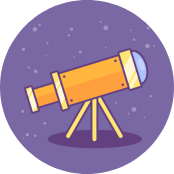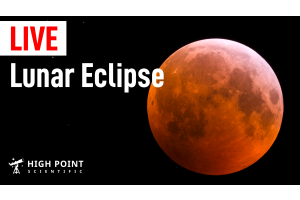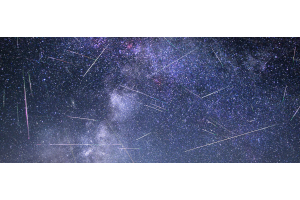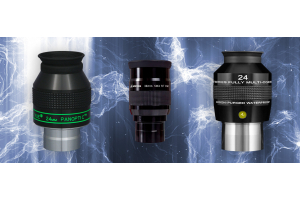
Total solar eclipses are often described as being a “once-in-a-lifetime event,” but the truth is, if you miss one, the chances are you’ll have the opportunity to see another. That said, you’ll most likely need to travel to witness it, so it’s important to have some realistic expectations before you start making your plans. In this article, we’ll review some of those expectations so you don’t find yourself disappointed when the time comes.
Expectation #1: It’s not safe to take your eclipse glasses off at any point during the eclipse.
Reality: This isn’t quite true; if you want to observe the partially eclipsed Sun, then you’ll absolutely need to wear your eclipse glasses. Staring directly at the Sun without protection can cause permanent damage to your eyes, including blindness. Sunglasses aren’t enough to protect your eyes either.
However, it’s definitely safe to remove your eclipse glasses during totality - in fact, this is the phase you absolutely won’t want to miss, and if you leave your glasses on, you won’t be getting the full experience. Take a look around during totality, and you’ll find yourself surrounded by twilight, with the darkened sky appearing as it would a little while after sunset. In the sky, you’ll see a beautiful corona spanning away from a black-looking Sun in the sky. The stars will also begin to pop out, with bright Venus being the most prominent planet in the sky.

Expectation #2: The solar eclipse will last for a few hours.
Reality: If you consider the length of the entire eclipse - from the start of the partial phase, through totality, and then to the end of the second partial phase - then, yes, a solar eclipse can last for a few hours.
However, the chances are you’re thinking about totality. After all, that’s the most exciting part, and what you’ve been looking forward to! In this case, totality will only last a maximum of seven and a half minutes, and the chances are the duration of totality for your specific eclipse will be a lot shorter.
As the Sun and Moon appear almost exactly the same size in the sky, the Moon is typically only able to entirely cover the Sun for a few minutes. There are two primary factors that will affect the duration of totality: the distance of the Moon from the Earth and how far you are from the center of the path of totality.
If the Moon is further away than usual, then its disc will appear slightly smaller, and it will take longer to pass across the Sun. However, if it is closer, then its disc appears larger, and totality will be shorter. Likewise, if you’re closer to the center of the path of totality (and therefore closer to the center of the Moon’s shadow), then totality will be longer, but if you’re near the edge of the path, you might find totality lasting just a few seconds.
For information specific to your location, we recommend using either computer software or an app (such as Stellarium or SkySafari) or an online resource, such as timeanddate.com.
Expectation #3: The moon turns completely black during a total solar eclipse.
Reality: A solar eclipse can only occur at new Moon, when the Moon is between the Earth and the Sun. Since the sunlit portion of the Moon is turned away from us at that time, the darkened side is turned toward us; this is true at every new Moon and every solar eclipse, whether it be total or only partial. Under normal conditions, when no eclipse is occurring, this simply means the Moon is (to all intents and purposes) invisible.
If anything, rather than turning black, the Moon actually becomes visible during a solar eclipse. During the partial phases, you’ll see the disc of the Moon slowly moving across the Sun, and a skilled photographer can even capture the surface features of the Moon during totality.

Expectation #4: A 99.9% solar eclipse is good enough.
Reality: Unlike a lunar eclipse, a total solar eclipse is only visible from a few locations. This is because during a total solar eclipse, the Moon casts a shadow on the Earth, but this shadow is only about a hundred miles across.
So why drive directly into the path of totality? Surely 99% or even 90% is enough, right? You’ll be very disappointed if you try to observe a solar eclipse with this expectation. Put simply, 99% is not totality, and without totality, you’ll be missing out on everything that comes with it.
More specifically, with 99% of the Sun eclipsed:
- You won’t see the ghostly corona - an awe-inspiring sight in itself
- You won’t see the Milky Way in the sky above
- You probably won’t see “Baily’s Beads” - beads of light that appear in the moments before totality
- The sky will darken, and the stars and planets may still be visible, but only briefly
- The temperature may drop, your surroundings will darken, and birds and insects may fall silent, but not to the same extent that you would have during totality, and, again, only briefly
That’s with 99% of the Sun’s disc eclipsed. At 90%, the chances are the only things you’ll experience are slightly darker surroundings and a slight drop in temperature.
Expectation #5: The corona can be observed anytime, eclipse or not.
Reality: The fact of the matter is that the Sun’s corona can only be observed during a total solar eclipse. Without an eclipse, even when using special filters, the corona is simply invisible with any ground-based telescope. The Sun’s intense light easily overpowers the faint, diffuse corona, and it’s only during totality, when the Sun’s brightness completely disappears, that the corona can be easily observed.

Expectation #6: Solar eclipses are rare events.
Reality: When it comes to the “rarity” of an eclipse, it really depends on what type of eclipse you’re talking about. Generally speaking, solar eclipses are not especially rare, as a solar eclipse of some kind tends to occur roughly every six months or so. However, each solar eclipse - whether it be partial, total, annular or even hybrid - is only visible from a relatively small portion of the Earth’s surface.
To be fair, it’s a little different with total solar eclipses. On average, they tend to occur every 12 or 18 months, but there can also be gaps of several years or more. For example, there was a total solar eclipse in June 2001, December 2002 and November 2003, but then nothing until March 2006. More recently, there was a total solar eclipse in December 2021 but then a gap of more than two years before the total solar eclipse of April 2024.
And if you want to experience totality, you really need to be in the right place at the right time; so if you intend to stay in one place and hope for the best, then yes, total solar eclipses are rare, and you could be waiting a very long time!
There’s a lot of misinformation about solar eclipses, and it can be hard to differentiate fact from fiction. We hope this article has given you a better understanding of what to expect the next time a total solar eclipse comes along. Did you know about these common solar eclipse misconceptions? Which one surprised you the most?

Learn More
Interested in learning more about nebulae, galaxies, planets, and more? Not sure where to begin? Check out our Astronomy Hub!
This Article was Originally Published on 12/14/2022







